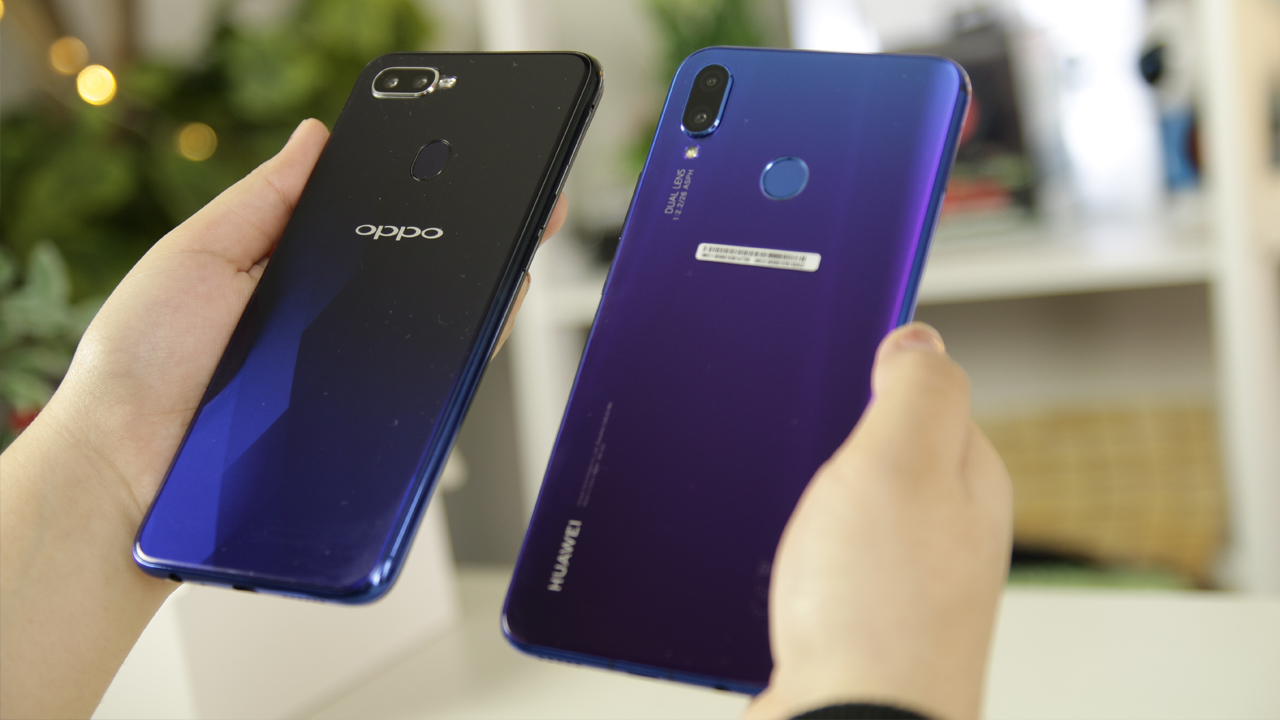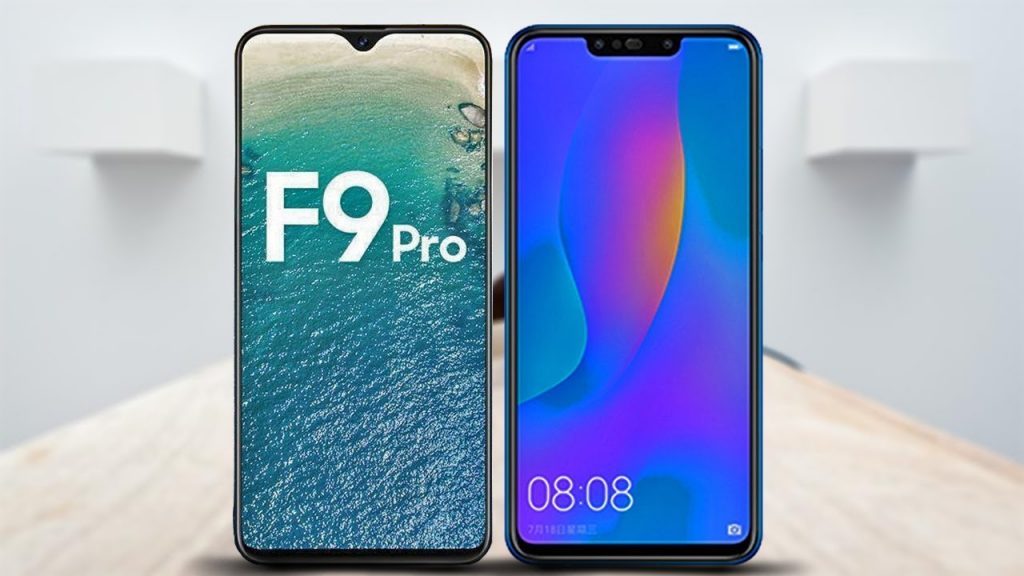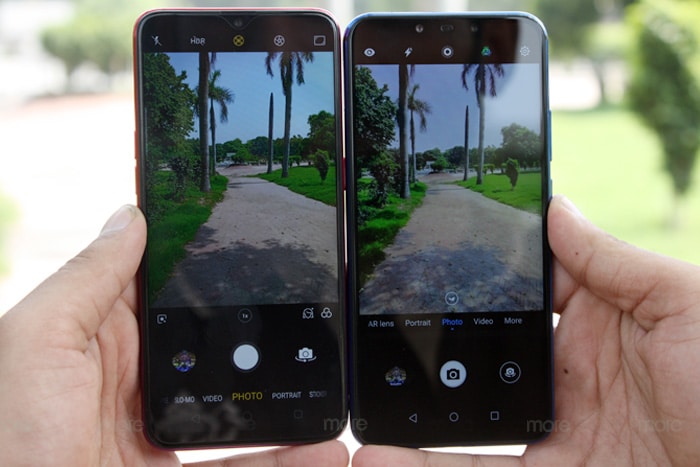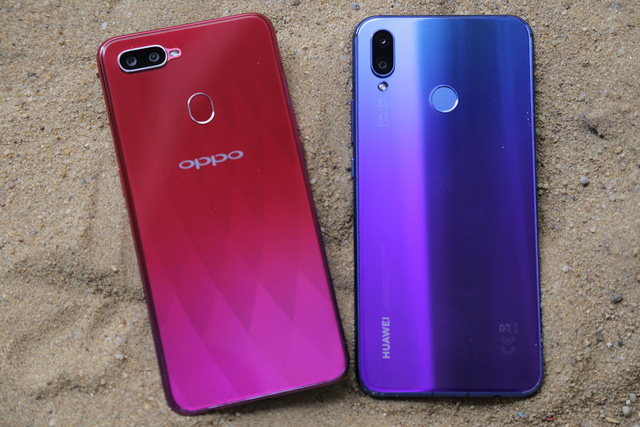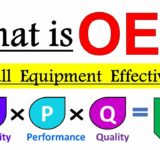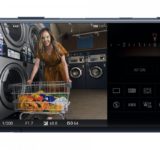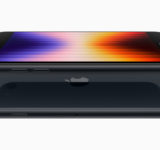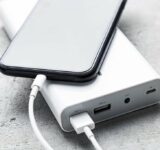Let’s compare two hot cakes in the smartphone market, the Huawei Nova 3i and the Oppo F9, shall we?
We all have been in a situation where we’re confused about which phone to buy at a certain price point, isn’t it? What would you do if you are in a dilemma to choose between two similarly priced smartphones that rival each other? The answer is pretty darn simple and complex at the same time, a comparison. Let’s compare two hot cakes in the smartphone market, the Huawei Nova 3i and the Oppo F9, shall we?
Build and Display
Starting off with the Oppo F9, it comes with a 6.3-inch Super IPS LCD display which translates to good viewing angles and natural colors. Along with a 19:9 aspect ratio brings in a larger screen to body ratio of 84%, which means a small footprint but a large display. As gorgeous the display looks, the plastic body doesn’t make up for a good in-hand feel hence the phone feels cheap. Other than that, the color options are great and you might be fooled to consider it a glass back.
On the other hand, the Huawei Nova 3i is no slouch either, with the same 6.3-inch screen size and FHD+ resolution and a notch, the device looks great overall. On the display front, Huawei’s IPS LCD panel wins by a slight margin over the Oppo F9 in the competition. If display quality is your priority, you know which one to go for. Same applies for the in-hand feel, the device looks beautiful with the tried and tested glass sandwich design and ads up to the heft of the device.
Both these phones host a similar battery capacity with the Oppo F9 having a tad bit larger 3,500mAh battery and the Nova 3i with a 3,340mAh battery, both these phones will last you through a day. The differentiating factor between the two is the charging time. This is where Oppo F9 wins with the support for 20Watts VOOC fast charging which is not present on the Huawei Nova 3i and takes somewhat 2 hours to charge up fully. But the sad part is that both of these phones still use micro USB for charging.
Thus, when it comes to overall build, design and in hand feel, the Huawei Nova 3i steals the crown with a glass sandwich design that doesn’t only look great but also feels premium in the hand over the polycarbonate (plastic) back on the Oppo F9. Which brings me to say, “Looks might be deceptive.”
Software and Performance
Both these phones run on Android 8.1 (Oreo), with their own sets of custom skins. The Oppo F9 runs on ColorOS 5.2 built on top of Android 8.1 Oreo. Whereas Nova 3i runs on EMUI 8.2 built on top of Android 8.1 as well. Both of these devices with their own set of skins, bring along several functionalities like face unlock, App Lock, Dual Apps, etc. Both offer customizations, but EMUI takes the lead with a better user experience over the ColorOS which feels half-baked as of now.
The main differentiating factor is the SoC, while the Oppo is powered by Mediatek Helio P60 chip, the Nova 3i uses its own in-house Hisilicon Kirin 710 chip. When it comes to handling day to day tasks, both these devices should get the job done. But under heavy loads like running multiple tasks and gaming, the Helio P60 on the F9 starts to show some lag whereas the Nova 3i with its GPU Turbo Technology for gaming, makes gaming a breeze and the intensive tasks too are handled well with exceptions of some 3D games that start to bog down the phone when the settings are cranked too high.
Although both of the chipsets are Octa-core chipsets built on the 12nm FinFET process, the Kirin 710, on paper seems to deliver high performance with the more powerful A73 cores clocked at 2.2GHz each when compared to four 2.0GHz A73 cores on the Oppo F9 and in real life too, this actually seems to be true.
The Huawei Nova 3i brings 4GB RAM plus 128GB ROM combo, which means storage will not be an issue. Whilst the Oppo F9 comes with 4GB of RAM and just 64GB of internal storage.
The Oppo F9 lacks the DRM L1 certificate due to which you can’t stream media at FHD resolution over platforms like Netflix and Amazon Prime. Plus the lack of Dual-band Wi-Fi makes even the connectivity a bomber, the presence of which gives the Nova 3i another set of pros.
Cameras
As far as the optics are concerned, both the phones seem identical on paper. The Oppo F9 packs a 16MP primary sensor with a 2MP depth sensor and the Nova 3i packs a 16MP primary camera and a secondary 2MP dedicated depth sensor. The distinguishing element is the focal length. Oppo F9’s sensor has a larger f/1.8 aperture that translates to some good low light and macro shots. Maybe due to the sensors used, the F9 loses to the Nova 3i’s sensor with its f/2.2 aperture and the 3i wins it when it comes to overall image quality and handles every lighting scenario like a champ.
When it comes to portrait shots, both of these devices offer manual modes for photography. This is a bit of a letdown as smartphone photography is evolving day by day. On the contrary, the presence of a full-fledged manual mode baked into the camera UI on the Nova 3i makes it perfect to nail some great shots like a pro. Let’s not talk about the AI on this one, as all it does is crank up the saturation making the picture even worse than clicking on Auto, more often than not. The ball goes into Nova 3i’s court again, when it comes to front camera or selfies, with a 24MP front-facing camera powered by AI, and a secondary 2MP depth sensor, this guy can pull off some great selfies, and the Auto HDR on the front camera is just an icing on the cake.
Oppo F9’s front camera is no slouch either, with a 25MP AI-powered camera, the Oppo F9 clicks selfies with a ton of details and comes really close to the Huawei Nova 3i but the Nova 3i beats F9 by a slight margin.
Battery Life
No matter which device you choose, you won’t be regretting, as both these phones will easily get you through an entire day of moderate to heavy usage on a single charge. The Oppo F9 has a 3,500mAH battery inside and the Nova 3i has a 3340mAh battery. Both are comparatively similar in size and even perform likewise. The helio P60, as well as the Kirin 710 chips, are built on the 12nm Fin-FET process which ensures good performance and a significantly better battery backup. The differences can be seen in the charging time. This is where the Huawei Nova 3i falls apart. The device doesn’t support any fast charging and takes a bit more than 2hrs to fully charge up. The Oppo F9 does support the fast charge and the included 20Watt charger juices up the phone fairly quicker than the Huawei Nova 3i.
Verdict
The comparisons and our experience with these phones leave us with the conclusion that both these devices fare pretty well, and you won’t be mistaken with any of these devices. The issues on the Oppo F9 are nothing to worry for, these are minor quirks that can be smoothened out with some software updates in the future. But as of now, the Huawei Nova 3i is definitely a well-rounded phone.
Both these champs cost identical at sub-NRs.40000 mark. They even perform significantly the same, so no matter which one you choose, you won’t be disappointed.


